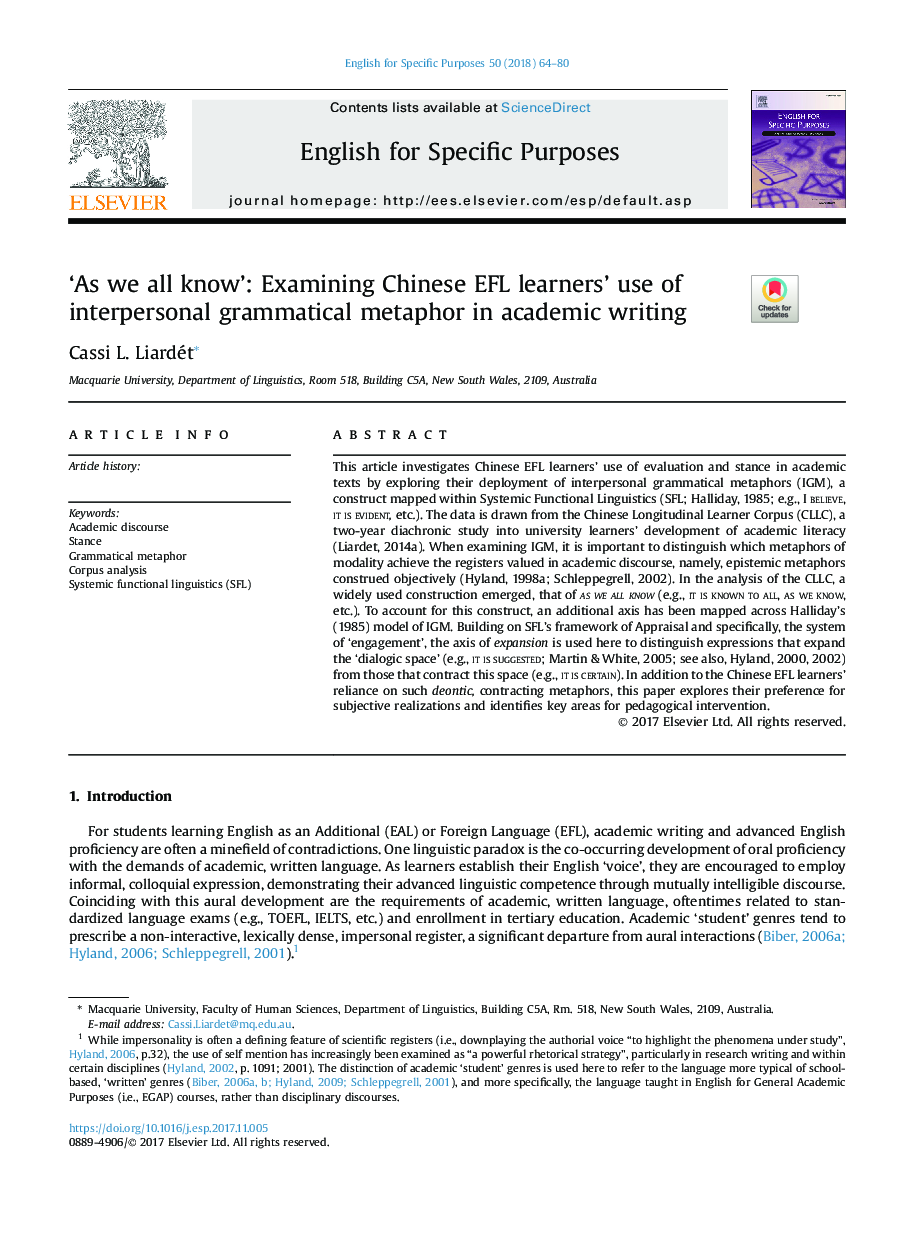| Article ID | Journal | Published Year | Pages | File Type |
|---|---|---|---|---|
| 6841026 | English for Specific Purposes | 2018 | 17 Pages |
Abstract
This article investigates Chinese EFL learners' use of evaluation and stance in academic texts by exploring their deployment of interpersonal grammatical metaphors (IGM), a construct mapped within Systemic Functional Linguistics (SFL; Halliday, 1985; e.g., I believe, it is evident, etc.). The data is drawn from the Chinese Longitudinal Learner Corpus (CLLC), a two-year diachronic study into university learners' development of academic literacy (Liardet, 2014a). When examining IGM, it is important to distinguish which metaphors of modality achieve the registers valued in academic discourse, namely, epistemic metaphors construed objectively (Hyland, 1998a; Schleppegrell, 2002). In the analysis of the CLLC, a widely used construction emerged, that of as we all know (e.g., it is known to all, as we know, etc.). To account for this construct, an additional axis has been mapped across Halliday's (1985) model of IGM. Building on SFL's framework of Appraisal and specifically, the system of 'engagement', the axis of expansion is used here to distinguish expressions that expand the 'dialogic space' (e.g., it is suggested; Martin & White, 2005; see also, Hyland, 2000, 2002) from those that contract this space (e.g., it is certain). In addition to the Chinese EFL learners' reliance on such deontic, contracting metaphors, this paper explores their preference for subjective realizations and identifies key areas for pedagogical intervention.
Related Topics
Social Sciences and Humanities
Arts and Humanities
Language and Linguistics
Authors
Cassi L. Liardét,
